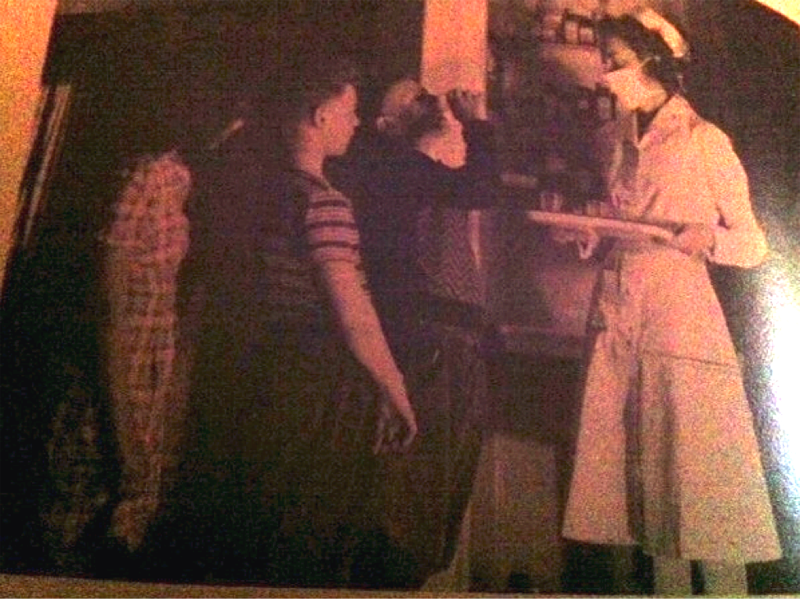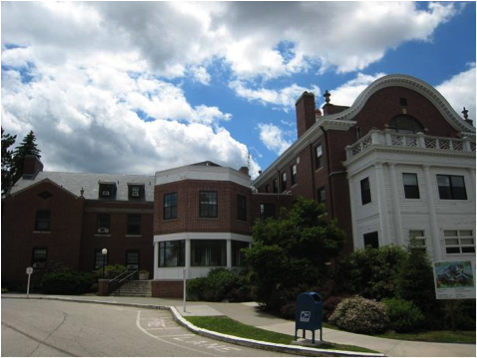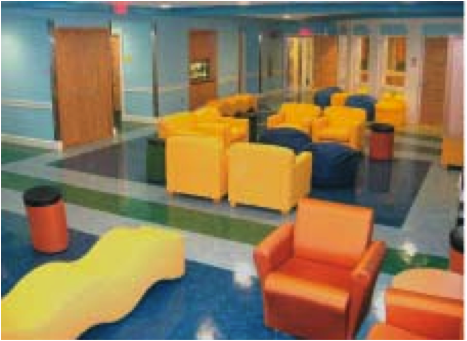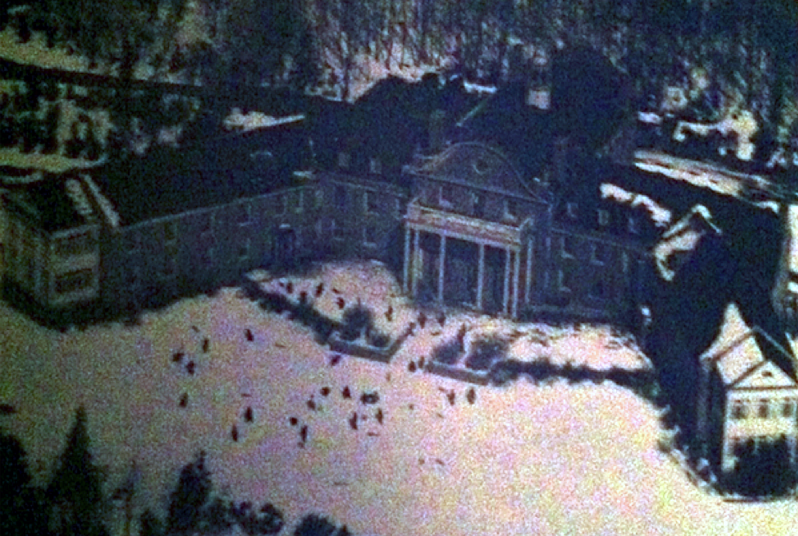Bradley Hospital: A Place of Healing
Posted by John Goncalves, Brown University, Class of 2013
When I think about a place of healing in New England, what immediately comes to mind is the Emma Pendleton Bradley Hospital also known as Bradley Hospital located in East Providence, RI. As the nation’s first neuropsychiatric hospital dedicated exclusively to children, Bradley Hospital prides itself on the ability to “provide a range of family-focused, high quality mental health care to infants, children, adolescents and young adults with emotional disorders and/or developmental disabilities. (Web: About Emma Pendleton Bradley Hospital)”
In looking back at the sites conception, it’s clear that the motive to establish such a place came from prominent lawyer, judge and professor George Bradley’s dearest defeat: his only child, Emma Pendleton Bradley, had been stricken with encephalitis – a disease that left her epileptic, retarded and afflicted with cerebral palsy. The tragedy eventually spurred him to conduct a worldwide tour for a cure or treatment that could improve the condition of his beloved daughter. Seeing that all psychiatric and neurology institutions were in both in their infancy and solely/minimally treated adult patients, such as the Butler Hospital for the Insane, George Bradley sought to ensure that the tragic fate that had greatly affected his family during Helen’s childhood did not repeat itself for other families. In fact, in his will, Bradley wrote,
“I…establish and equip my estate…to be forever kept and maintained as a place for the care, treatment, relief and support of poor and needy performs afflicted with nervous or other chronic diseases…Out of the misfortunate of our only child has grown the purpose and the hope that from the affliction of this one life may comfort and blessing to many suffering in like manner. (Johnston 1991: 12-13)”
This eventually resulted in the conversion of the Baton House (the family's Providence estate) into a treatment facility for children to soon be dedicated as The Emma Pendleton Bradley Home. In April of 1931, the building, its facilities, equipment and services were formally open to children.
The Providence Sunday Journal Magazine added, “It’s the first hospital of its kind designed to provide the newest and most approved methods of treatment for children suffering from nervous diseases…sickness…behavior problems requiring special treatment…and disorders of the nervous system (The Providence Sunday Journal Magazine 1931: 4).”
Since the Bradley Home has been launched, the sparking facility designed to help individual children with a variety of mental disorders is undoubtedly a place of healing.
In the decade that followed its creation, Bradley hospital grew to achieve notoriety as a remarkable treatment institution for cutting edge research in childhood disorders. Testament to Bradley’s staff during the decade, “from the yard crew to the nurses to the physicians to the administrators” the hospital rose to national prominence. Even after two decades, Bradley continued to subsidize the great majority of it patients and continued to increase the body of new research and treatment methods. According to Johnston, the clinical philosophy at Bradley was calling for an “increasingly intensive individual study and psycho-therapy…(stressing) the importance of working directly with the parents and agencies that referred the children. (31).” Improved and expanded treatment through the second half of the 20th century meant turning sorrow into joy for generations to come. Research grants and awards continued flowing, partnerships with Brown University assured greater volunteerism/ academic affiliation and Bradley Hospital developed into arguably the most reputable continuum of care for adolescent patients and their families.

Today, when it comes to the children who have had their lives touched and changed by Bradley Hospital, what’s really fascinating to me are the deeper feelings and ideas concerning space and place and how these children themselves perceive this environment. As Yu Fu-Tuan suggests, biology conditions our perceptual world (Tuan 1977: 20). With the variety of mental health issues the plaguing the hospital’s clients including anxiety, attention deficit disorder, austim, bipolar disorder etc. it’s nearly impossible to generalize how these children create a spatial frame of reference and how that is influenced by their individual biological conditions. Moreover, considering the troubling and baffling stories of children facing grave psychiatric, emotional and mental health issues beyond the usual ones of growing up, I am interested in learning more about how each young child who is a patient at Bradley Hospital distinguishes themselves between the external environment, and how they understand place within the institution. Instead of making assumptions or generalizations about Bradley’s children in general, I look into two brief case studies of children a way of gaining a greater understanding. Although, again, the way a potential suicide patient understands place and the way a child with aspergers syndrome understands place is going to be entirely different due to their biological condition and upbringing – even if they are of the same development stage (school age/adolescence in this case). One can assume however how Bradley hospital, as an institution, may have a stronghold a child’s understanding of place. First, if we define place “as a focus of value, of nurture and support” then I would say that the institution can be a very important place in their lives especially in its ability to provide essential shelter and a reliable source of physical and physiological comfort and stability. For many children Bradley hospital serves as a familiar place and safe haven. Thus, it’s easy to believe that many children also anchor their personality in this place.
Take the instance of Elyse Monti, a 14 year old girl who’s Obsessive Compulsive Disorder (OCD) resulted in an unstoppable loop of irrepressible, fearful thoughts about schoolwork and the possibility of failure all through elementary and middle school. Due to this obsessiveness, Elyse would do and redo her homework night after night. With the thought of suicide looming, Elyse’s mother Karyn, had her admitted into Bradley Hospital. By entering Bradley’s main building which has a bright, updated appearance and looks like a college dormitory (also made up of a brick exterior trimmed with white as well as warm Colonial-style woordwork and yellow and cream colored walls), Elyse found solace and comfort in her stay. Through a variety of medications, recommendations and effective treatments at Bradley, Elyse, who is now studying at the University of Pennsylvania has been better able to cope with the challenges posed by her OCD. So much so that in a high-school English class essay, she wrote about Bradley, told close friends why she’d been out of school despite the stigma associated with mental illness and has since been featured in local and national newspapers in addition to national TV shows as an activist for OCD research. In being entrenched in the hospital’s culture and having that experience, Elyse, like many other youth that are admitted into Bradley Hospital, had a positive interpretation of the environment. Through culture and experience, which influenced her interpretation and steady accretion of sentiment towards the hospital, Elyse has prized Bradley as a place full of healing, security and deep meaning (Tuan 1977: 9).


Or take the case of 11-year-old Justin Sampson who had to leave both home and school due to autism, Bi-polar disorder as well as a mitochondrial disorder that lead to him picking and pulling skin from his arms and legs, opening wounds all over his body. Eventually Justin was placed in an anesthesia-induced coma, which left him unconscious and unable to hurt himself. Unfortunately, when he was re-awakened he would injure himself again. Because of this difficult challenge, Justin was sent to Bradley hospital where he was provided with high doses of morphine to ease him off the anesthesia, assigned two direct care workers to be with him at all times, and various other medication, to allow him to improve in his predicament. Through personalized treatments Justin was eventually able to recover from these issues and return home and to school.
When thinking about Bradley hospital, I’m brought back to the reading of Edward S. Casey’s Getting Back Into Place. In this book, Casey thoroughly lays the groundwork for a philosophy of place. Besides the numerous abstractions in his densely woven philosophical theory on concepts such as dimension and orientation, Casey’s important suggestion is that when we lose a sense of place, a sense of ourselves, parts of our identity and past are also lost. Whether it be the Navajo’s being forcibly displaced from their homeland or a young teenage girl or young boy leaving school for a neuropsychiatric hospital for adolescents, I personally believe there is a great corollary between these situations. Sometimes our biological conditions force us to leave our area of comfort. However, passing our lives in a given place creates a history and culture – even when Elyse, for example, was longing to go back to school following her stay at Bradley Hospital. Even with this sacrifice in place, as Casey would argue, in some way, these places contain each other. Similar to his illustration where he mentions that the restaurant at the top of Mount Holyoke "serves to embellish the landscape ... rather than to detract from it" (Casey 1993: 256), this is exactly the experience gained by Elyse as the hospital and school setting worked to compliment one another in this case. For Justin, having the place of healing allowed him the freedom to get back to other places of security, including home.
While many may view leave-taking to a new place as a source of anxiety, sickchildren who are admitted into Bradley may experience place, as Tuan would argue, is a stabilizing force for healing in a fragmented society. I think Bradley Hospital is the epitome of this belief. Regardless of what psychiatric issues plague children, there is great ability for them to connect with a place like this by being open to its possibilities. To date, Bradley Hospital provides a broad range of psychiatric services for adolescents and children, some as young as infants. The organization also boasts hundreds of awards as well as 60 licensed inpatient hospital beds, another important resource that serves about 900 children a year in the State of Rhode Island. Through multi-dimensional programming and cutting edge treatment, Bradley hospital is a great place of healing for children in New England.

References:
"About Emma Pendleton Bradley Hospital." About Bradley Hospital, Rhode Island | Bradley Hospital, East Providence, RI. N.p., n.d. Web. 20 Sept. 2012. <http://www.bradleyhospital.org/about-bradley-hospital>.
Casey, Edward; 1993. Getting Back Into Place: Toward a Renewed Understanding of the Place- World. Bloomington: Indiana University Press.
Johnston, Michelle Dally: 1991. Out of Sorrow and Into Hope: The History of the Emma Pendleton Bradley Hospital.
The Providence Sunday Journal Magazine, April 5, 1931. 4-5.
Tuan, Yu-Fu,:1977. Space and Place: The Perspective of Experience. University of Minnesota Press: Minneapolis, MN.
